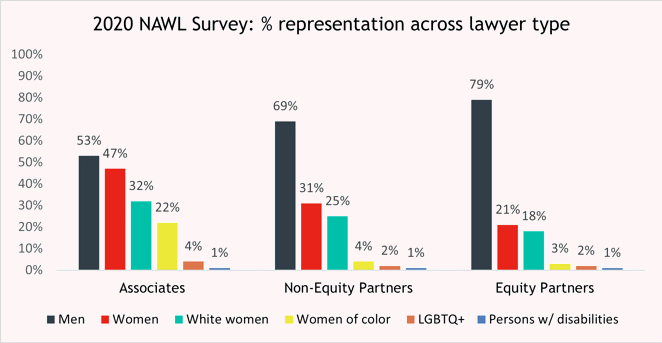Pride Month 2021: Intersectionality in the business of law
- Diversity in law


As Pride Month draws to a close, global corporations and individuals commemorate the 1969 Stonewall uprising that helped launch a movement to outlaw discriminatory laws and practices against LGBTQ+ Americans. However evident Pride Month branding may be, challenges persist in the law firm environment: Research shows that intersectionality (the intersection of disadvantaged characteristics—such as female gender and sexual orientation, gender identity or minority ethnic status) can compound work-based inequalities.
As shown in a recent study by the National Association of Women Lawyers, minorities are much better represented at associate levels, but numbers drastically decline as minorities approach senior ranks within law firms.

For example, women represent close to half of all law firm associates in the US, yet only 21% of equity partners. For this reason, Burford launched the first iteration of The Equity Project in 2018 with an initial $50 million capital pool earmarked for financing commercial litigation and arbitration matters led by women and thus helping to close the gender gap in law.
The numbers for other diverse groups such as LGBTQ+ individuals or intersectional groups such as women of color are even more alarming. Out of the 21% of women equity partners in US law firms only 3% are women of color, and only 2% of all law firm equity partners self-identify as LGBTQ+.
Studies from Boston Consulting Group, McKinsey and others show that companies with greater diversity demonstrate increased profitability and creativity, stronger governance and better problem-solving abilities. Yet, while the business case for diverse teams is clear, law firm progress remains slow. While there are no shortage of diversity and inclusion programs, at the current rate of change we won’t see law firm representation that reflects the clients and communities which they serve for at least a generation. New and innovative solutions are needed to drive diversity in the legal profession and ensure that disadvantaged groups are visible at leadership levels.